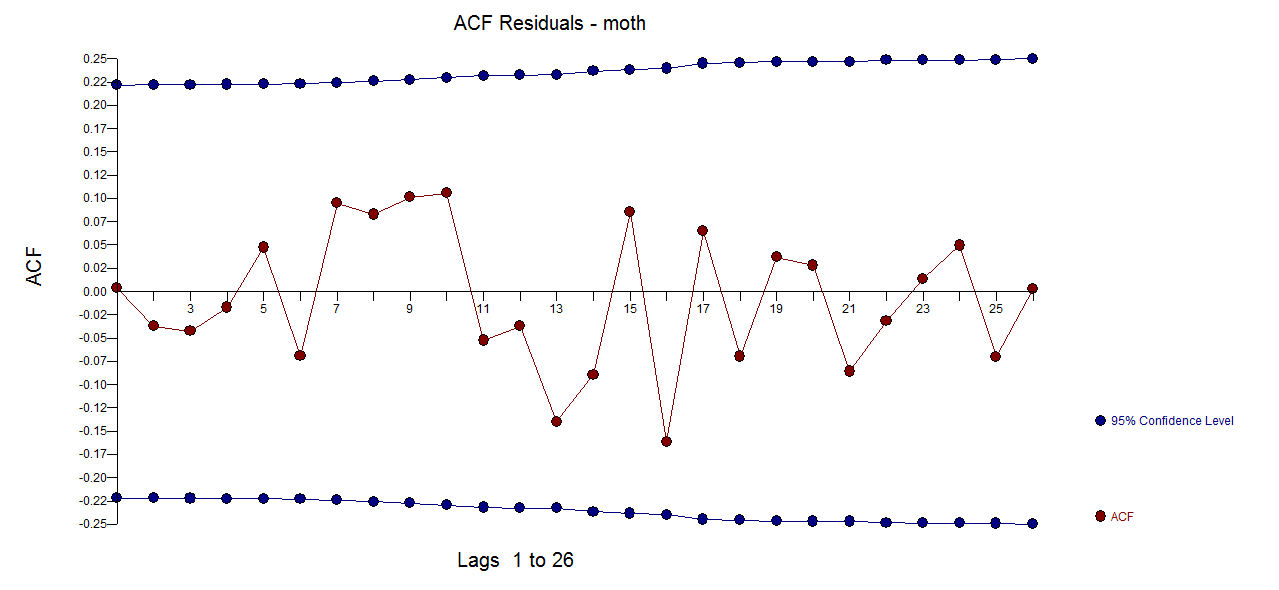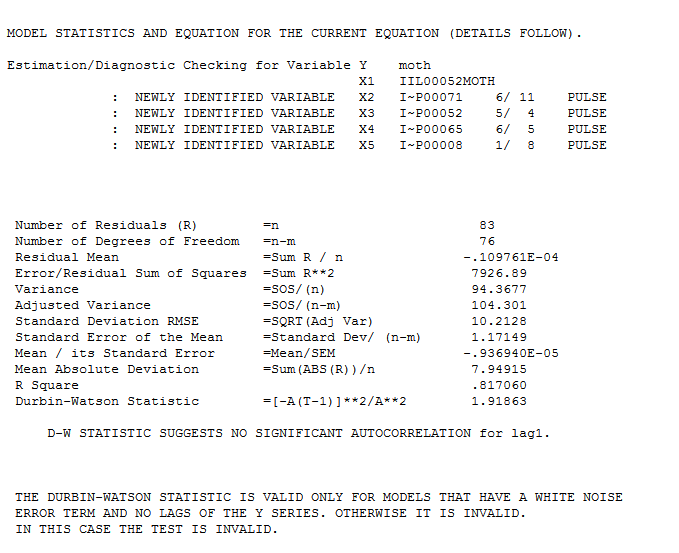I am new to time series analysis and I've been learning the basics through a couple resources. I am working with monthly data with a known intervention date (mid-2014) and trying to determine if there was a significant change in the mean number of counts before/after the intervention.
The main issue is that my data does not have constant variance over time (just by eye-balling) and I do not know what steps should be taken for an appropriate model selection. A lot of the material I've read so far only explained the process for stationary time series but not for cases when the assumptions for stationary time series are violated. An image of my data is below.
I am working in R and any help or thoughts will be much appreciated!
Edit: Added the data, where month.counts is the counts (outcome of interest) per month, pre.post.int is a binary variable indicating the intervention (0 being pre-, 1 being post-intervention), ts.counts being a ts object in R, and df.counts is a data frame containing a date index, month.counts and pre.post.int as columns.
month.counts <- c("24", "22", "14", "12", "30", "4", "18",
"37", "5", "12", "18", "37", "24", "11",
"29", "31", "21", "29", "17", "22", "19",
"19", "9", "6", "18", "10", "33", "25",
"18", "10", "7", "11", "10", "26", "44",
"34", "15", "20", "30", "14", "18", "31",
"15", "19", "25", "19", "20", "12", "11",
"23", "19", "15", "28", "28", "22", "44",
"41", "38", "49", "66", "83", "66", "64",
"69", "82", "42", "54", "65", "86", "83",
"108", "68", "65", "60", "55", "45", "49",
"42", "62", "61", "67", "54", "53", "44")
pre.post.int <- c("0", "0", "0", "0", "0", "0", "0", "0",
"0", "0", "0", "0", "0", "0", "0", "0",
"0", "0", "0", "0", "0", "0", "0", "0",
"0", "0", "0", "0", "0", "0", "0", "0",
"0", "0", "0", "0", "0", "0", "0", "0",
"0", "0", "0", "0", "0", "0", "0", "0",
"0", "0", "0", "1", "1", "1", "1", "1",
"1", "1", "1", "1", "1", "1", "1", "1",
"1", "1", "1", "1", "1", "1", "1", "1",
"1", "1", "1", "1", "1", "1", "1", "1",
"1", "1", "1", "1")
ts.counts <- ts(data = month.counts, frequency = 12, start = c(2010,1))
df.counts <- data.frame(seq_along(month.counts), month.counts, pre.post.int)
colnames(df.counts) <- c("date.index", "counts", "pre.post")











